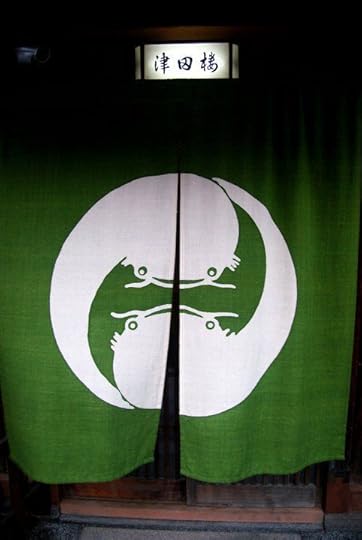Chris Howard's Blog, page 35
October 10, 2019
October 5, 2019
October 2, 2019
damnsarge:You’re gonna go work for The Vulture? Have you...
September 30, 2019
The Andromeda Galaxy (M31) is our largest and most magnificent...
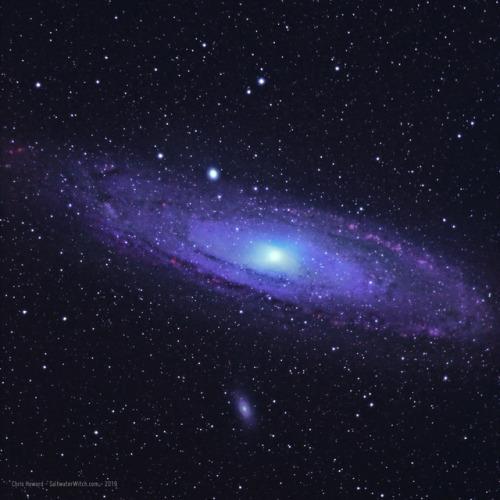
The Andromeda Galaxy (M31) is our largest and most magnificent galactic neighbor, about 2.5 million light-years away from earth (or 780 kiloparsecs if you’re of a more serious demeanor). Here’s my bi-color version in near-IR and hydrogen-alpha. With a 685nm IR longpass filter I have managed to get a ring in M110 (NGC 205) the dwarf elliptical galaxy and satellite of Andromeda (center bottom). Wasn’t expecting that. I will probably upgrade to the Astrodon Sloan Gen2 i’ (695 - 844nm) near IR filter at some point, but I’m happy so far with the much cheaper Optolong 685nm. https://SaltwaterWitch.com
September 29, 2019
Orion Nebula (M42) in the SHO Hubble Palette - with and without...
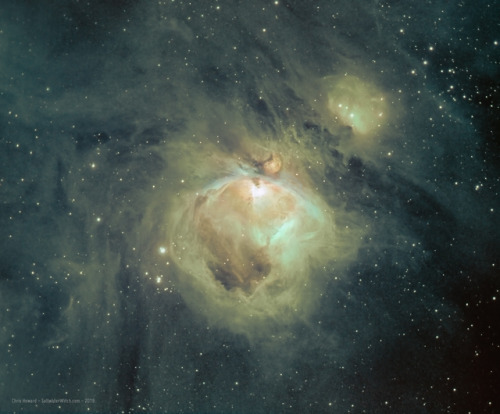
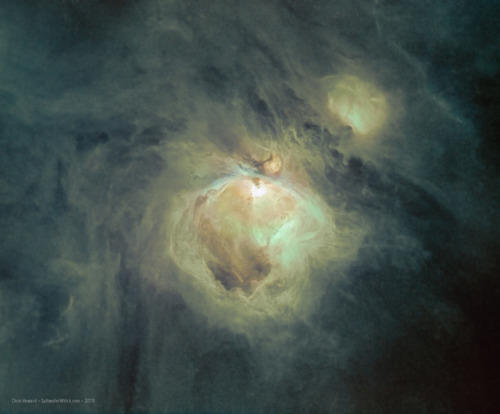
Orion Nebula (M42) in the SHO Hubble Palette - with and without stars - I have been thinking about how to represent false-color imaging for deep sky objects, and I’ve been keeping more of that abundant hydrogen green in the mix when doing SHO Hubble Palette images, where we map Sulfur, Hydrogen, and Oxygen bandpasses to Red Green Blue (RGB). Because hydrogen is–by a wide margin–the most abundant element in the universe, and many of these nebulae are HII Regions (vast expanses of interstellar atomic hydrogen that’s ionized), there ought to be way more green in SHO images than we normally see. It’s become standard go heavy on a rust red and deep blue, with almost of the green removed. All of these color choices are esthetic choices. The images I’m posting come from the data from three separate filters, Ha, OIII, and SII, so in a sense there are no incorrect color levels–within reason.
You do see a lot of color (LRGB) imaging with a target like M42, and with corresponding heavy reds and browns of bandpasses on the red end of the spectrum–and heading off into infrared. Most of my shots of Orion Nebula from past years has been in RGB with a luminance layer.
In the first set I toned the hydrogen green way down until I’m just getting a nice hydrogen green cast over everything.
Imaging notes: William Optics GT81 at f/4.7 with WO 0.8x Flat6A II, Astronomik Ha, OIII, SII 6nm filters, Moonlite focuser, ZWO ASI Cameras ASI120MM OAG, Imaging camera: ZWO ASI1600MM Pro cooled mono on an Orion Atlas EQ-G mount. Stacked in DSS, processed in PS CC 2019. 40 x 120 second exposures for each filter.
September 28, 2019
Hanging out on the border between Cepheus and CassiopeiaNGC...
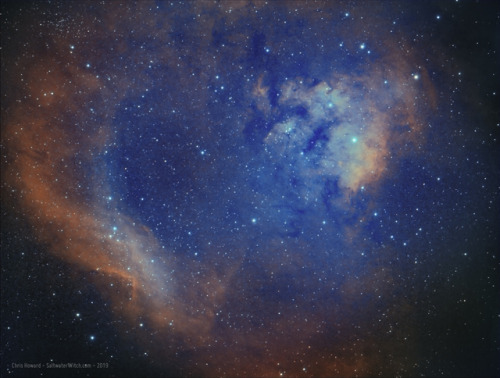
Hanging out on the border between Cepheus and Cassiopeia
NGC 7822, Sharpless 171, Ced 214 region, along with the star cluster, Berkeley 59 at the top left. The bright core on the right is a massive star-forming complex that lights up most of the surrounding clouds of interstellar hydrogen and oxygen between Cepheus and Cassiopeia. Imaging notes: William Optics GT81 at f/4.7 with WO 0.8x Flat6A II, Astronomik Ha, OIII filters, Moonlite focuser, ZWO ASI120MM OAG, Imaging camera: ZWO ASI1600MM Pro cooled mono on an Orion Atlas EQ-G mount. Stacked in DSS, processed in PS CC 2019. Bi-color Ha and OIII, 13 x 300 second exposures for each filter.
Sure, automating your astro systems is a wonderful...
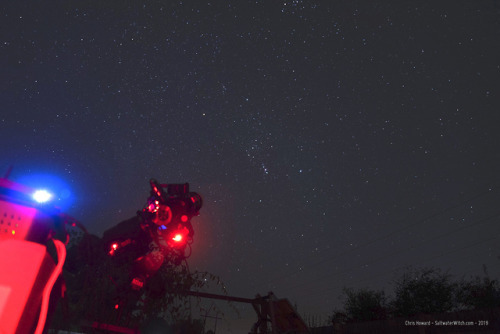
Sure, automating your astro systems is a wonderful thing–computers, programmable controllers, sensors tied to cameras, motorized telescope mounts, and other hardware were made for this. Bringing them all under a single application, or a set of applications and protocols, makes the process of scheduling imaging runs relatively easy–slewing to targets, focusing, plate solving, image capture sequences, auto-guiding–everything machines do very well. It’s what they’re good at. And yes, there’s a lot of preparation, configuration, even tinkering involved in getting these systems to run smoothly through the night–and that goes for all of them. I don’t know of an astronomical equipment or observatory control suite that just works out of the box. That doesn’t exist yet.
Back to “Sure, automating your astro systems is a wonderful thing…” because you know there’s going to be a “but”, or in this case, a “just”.
Just don’t forget to get out there and look at the sky–if you can. If you’re shooting narrowband targets in a red zone, maybe there isn’t much to look at above you but the pale glow of street lights. Sorry to hear that, but it’s awesome to see you’re persevering anyway. I’ve seen some kick-ass narrowband DSO images on Astrobin shot from the middle of LA. Technology will find a way–or rather, people will reconfigure or refine the technology to find a way. That’s what we’re good at.
Anyway, I happen to be out in the backyard at 3 in the morning with my Nikon D750 and 24mm lens on a tripod. You know, like you do. I only took one shot–this one of the constellation Orion from a low angle with some of my equipment in the foreground. I spent the rest of the time just looking up, doing some honest to goodness stargazing. The universe really is awesome. I mean that in the true sense of the word, not the cool California sense, which it also is, of course.
If you don’t have clear skies tonight, I hope you will be blessed with several in a row very soon!
September 26, 2019
Orion is back in the sky! Sure, you have to get up at 3 in the...
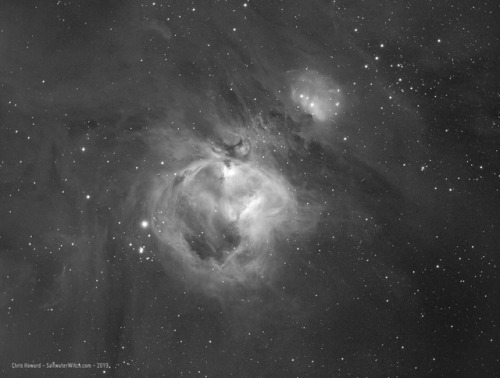
Orion is back in the sky! Sure, you have to get up at 3 in the freakin’ morning to see it with your own eyes. Or you can program your astro imaging system to stay up all night and take pictures without you. Here’s M42, Orion Nebula, along with M43, De Mairan’s Nebula–that’s the spherical-looking cloud formation with the big bite taken out of it. And above that, shining brightly, Sh2-279 Running Man Nebula–although the famous running man shape isn’t clear in hydrogen alpha. It really comes out with oxygen III and sulfur II. I’ll come back another night to capture the OIII and SII frames. Notes: 31 x 240 second exposures in Ha + 20x 10 second subs just for the Trapezium (the super bright core of the Orion Nebula–so bright I have to take separate short exposure shots and merge it back in processing). https://SaltwaterWitch.com

